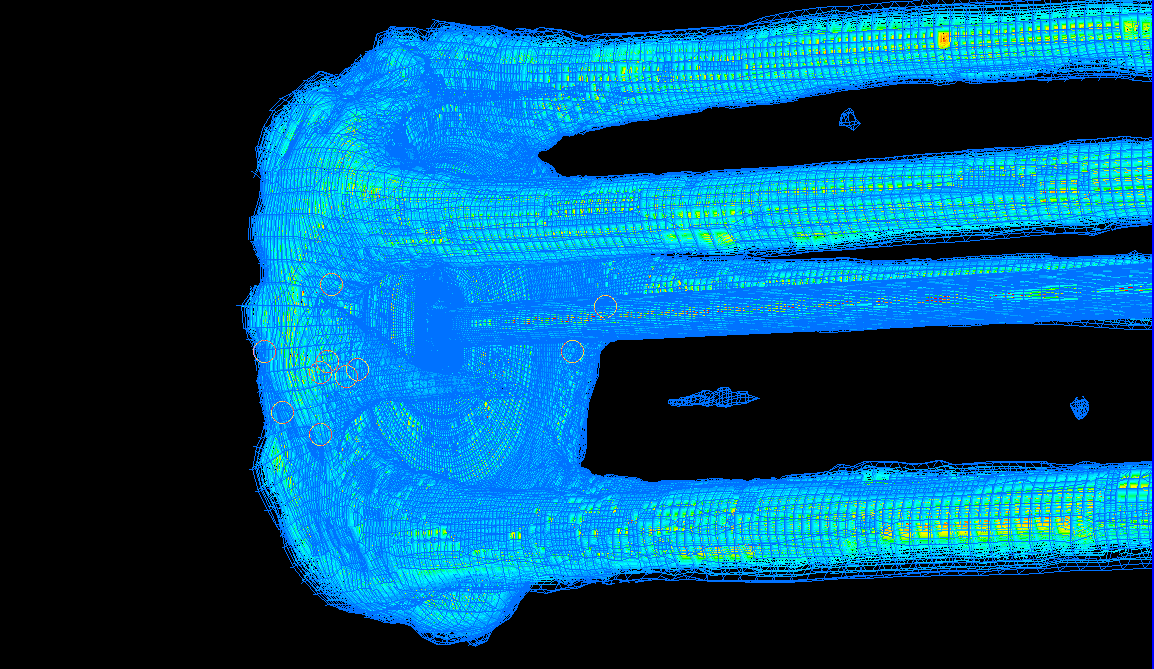Welcome back! This week there weren't any AERIM events to go to so we had plenty of time to use towards lab work and meeting with Dr. Guessous and Sangeorzan to discuss our results. During these meetings, we found that it was necessary to do a little digging in order to find the best Volume Fraction (VF) cut off range for our data analysis. This volume fraction cut off point is used to show the area of oil on a given plane. If it is too low, as in the picture below, our area will include too much air. If it is too high, one may be neglecting too much oil and thus the mass flow rate is drastically reduced.
 |
This is an oil Volume fraction from 0 to 1. Notice that this is the area
of the entire top plate because it also includes air in its area calculation. |
 |
| This is an impingement area where the Volume Fraction cut off is a 0.05, or 5%. |
So, in order to effectively consider our VF cut off point, we made plots of density and Volume Fraction at certain distances across the cross-section of a stream. The way Fluent calculates Mass Flow Rate is based off of density. Additionally, there is a direct correlation between density and the volume fraction cut off, as can be seen below.

After doing much more analysis concerning the VF cut off point, we decided that a cut off point of 5% would be optimal as it not only clips out the air from calculations, but it also contains the bulk of the oil.
In other news, we're also investigating the formation of a stream on our 3.64m/s case. Below is an image of a drip that is not quite a stream yet. We're refining the mesh here and continuing this simulation to see if indeed a full-fledged stream forms.
 |
| A prettier, side angle view that shows the early formation of a stream. |


No comments:
Post a Comment